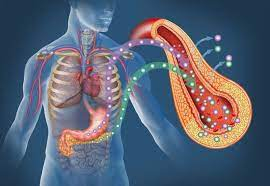



Defination
• Diabetes mellitus (DM) is a clinical syndrome characterised by hyperglycaemia due to absolute or relative deficiency of insulin, or both (i.e. defects in insulin secretion, insulin action or both).
Aetiological Classification
Type 1 diabetes
• Type 1 A (immune-mediated)
• Type 1B (idiopathic)
Type 2 diabetes
Gestational diabetes mellitus (GDM)
• The two broad categories of DM are designated type 1 (NOT type I) and type 2 (NOT type II).
• In type 1 DM, there is absolute insulin deficiency. Type 1 is subdivided into two groups: type IA due to cell-mediated autoimmune destruction of 13-cells and type lB where 13-cell destruction occurs due to unknown cause. It most often occurs in younger patients but nearly 10% of patients above the age of 30 years have this type of DM.
• In type 2 DM, there are variable degrees of insulin resistance, impaired insulin secretion and increased glucose production. It also occurs due to several genetic and metabolic syndromes. Some children have type 2 DM.
Clinical Features
TYPE 1 DM
• Usually begins before the age of 40.
• Body habitus is normal to wasted.
• The onset of symptoms may be abrupt, with polyuria, polydipsia, polyphagia and weight loss developing over days or weeks.
• Some cases may present as ketoacidosis during an intercurrent illness or following surgery.
• Occasionally, an initial episode of ketoacidosis is followed by a symptom-free interval ("honeymoon period") during which no treatment is required.
• Characteristically, the plasma insulin is low or unmeasurable. Glucagon levels are elevated but suppressible with insulin.
TYPE 2 DM
• Usually begins after the age of 40.
• The typical patient is obese.
• The symptoms begin gradually, over a period of months to years. Frequently, hyperglycaemia is detected in an asymptomatic person on a routine examination. Many patients will present with one of the chronic complications of diabetes and on investigations are found to be diabetic.
• These patients usually do not develop ketoacidosis. In the decompensated state, they are susceptible to the syndrome of hyperosmolar hyperglycaemic state (hyperosmolar non-ketotic coma).
• The plasma insulin levels are normal to high. Glucagon levels are elevated, but resistant to insulin.
Potential Diabetics
• Potential diabetics are persons with a normal glucose tolerance test who have an increased risk of developing diabetes for genetic reasons. Examples are:
• Children of two diabetic parents.
• Sibling of a diabetic.
• Non-diabetic member of a pair of monozygotic twins where the other is a diabetic
Diagnosis of diabetes mellitus.
• Diabetes may present with polyuria, polydipsia, polyphagia and significant weight loss despite polyphagia.
• Depressed immune status may result in flare-ups of pulmonary tuberculosis, non-healing of wounds, recurrent styes, candidial pruritus vulvae, balanitis and recurrent urinary tract infections.
• Some patients may present with end-organ involvement-e.g. retinopathy, nephropathy or neuropathy.
• In some cases, risk factors may be identifiable-e.g. obesity, pregnancy and first-degree relatives of known diabetics.
• Urine examination may show glycosuria with or without ketonuria.
• Glycosylated haemoglobin (HbA1) levels may be elevated (normal <6%).
• HLA typing may reveal the genetic predisposition in type 1 diabetes mellitus.
• At the time of diagnosis, assess the patient completely, particularly blood pressure, possible diabetes complications such as neurologic and foot examinations, lipid profile, urine microalbumin:creatinine ratio, and an ophthalmologic assessment to evaluate for retinopathy.
• The goal of treatment is to achieve HbAlc <6.5% or HbAlc >6.5% if lower target cannot be achieved without adverse outcomes.
Dietary management of diabetes mellitus.
• People with diabetes should receive individualised dietary advice (medical nutrition treatment) as needed to achieve treatment goals. Medical nutrition diet and physical exercise activate cellular mechanisms which protect by improving mitochondrial function, reducing generation of radicals and improving efficacy of insulin.
• The preparation of a dietary regimen for a diabetic can be considered under three steps.
First Step
• This involves the estimation of the total daily caloric requirement of the individual patient. This must be estimated after considering a number of variable factors like age, sex, actual weight, desirable weight, activity and occupation of the patient. However, an approximate total daily caloric requirement can be calculated as:
• Sedentary individuals-30 Kcal/kg/day
• Moderately active individual-35 Kcal/kg/day
• Heavily active individuals---40 Kcal/kg/day
Second Step
• This involves allocation of the calories in a proper proportion to carbohydrate, protein and fat. The recommended proportion of calories to be derived from each of them is given as:
• Carbohydrate-50-65%.
• Protein-10-20%.
• Total fat-25-30%
Third Step
• This involves distribution of the calories throughout the day. This is particularly important in insulin-requiring diabetics to avoid hypoglycaemia. Different distributions may be required for different lifestyles. However, a typical pattern of distribution of calories is:
• 20% of the total calories-for breakfast
• 35% of the total calories-for lunch
• 30% of the total calories-for dinner
• 15% of the total calories-for late-evening feed
TREATMENT AT DR. SOHAN LAL CLINIC
The integrated POLYCLINIC facility offers patients to select their treatment either from the Department of Homeopathy or from the Department of Medicine.
We provide scientific, research-based, and professional services to people across the world, aiming to achieve the highest success rate.
